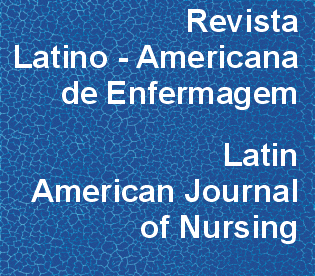Salud cardiovascular en población residente en las capitales brasileñas
DOI:
https://doi.org/10.1590/1518-8345.1327.2843Palabras clave:
Salud, Sistema Cardiovascular, Factores Epidemiológicos, Encuestas Epidemiológicas, Promoción de la SaludResumen
Objetivo: estimar la prevalencia de los indicadores de salud cardiovascular ideal en el ámbito poblacional, según sexo, edad, escolaridad y región de residencia. Método: estudio transversal que utilizó datos de 41.134 participantes del Sistema de Vigilancia de Factores de Riesgo y Protección para Enfermedades Crónicas por Encuesta Telefónica. La evaluación de la salud cardiovascular ideal consideró cuatro factores comportamentales: no fumar; presentar índice de masa corporal menor que 25 kg/m2; realizar actividad física y consumir frutas y hortalizas cinco o más veces por día; y dos factores clínicos (no referir diagnóstico de diabetes y de hipertensión arterial). La suma de los factores resultó en un puntaje que varió de cero (peor salud cardiovascular) a seis (salud cardiovascular ideal) factores en niveles ideales. Resultados: considerando los seis factores, solamente 3,4% de la población estudiada presentó niveles ideales de salud cardiovascular y la mayoría de los participantes (57,6%) presentó tres o cuatro factores ideales. Las mujeres presentaron mayor prevalencia de salud cardiovascular ideal (3,8% versus 2,9% de los hombres) (p < 0,0001). Conclusión: los hallazgos de este estudio son coherentes con el elevado riesgo de mortalidad por enfermedades cardiovasculares, observado para la población brasileña y pueden contribuir para comprender mejor el escenario de salud cardiovascular en la población urbana del país.Descargas
Los datos de descarga aún no están disponibles.
Descargas
Publicado
2017-01-01
Número
Sección
Artículos Originales
Licencia
Los derechos de autor son propiedad exclusiva de la Revista Latino-Americana de Enfermagem (RLAE), transferidos a través de la Declaración de Transferencia de Derechos de autor (que está en el formulario individual de declaración) firmada por los autores. Para el uso de artículos, RLAE adopta la Licencia Creative Commons CC BY-NC atribución no comercial (abstracto o código completo de licencia). Con esta licencia es permitido acceder, descargar (download), copiar, imprimir, compartir, reutilizar y distribuir los artículos, desde que para uso no comercial y con citación de la fuente, dando los créditos de autor a la Revista Latino-Americana de Enfermagem. En tales casos, no se necesita permiso de los autores o editores.Cómo citar
Matozinhos, F. P., Felisbino-Mendes, M. S., Gomes, C. S., Jansen, A. K., Machado, Ísis E., Lana, F. C. F., Malta, D. C., & Velaquez-Melendez, G. (2017). Salud cardiovascular en población residente en las capitales brasileñas. Revista Latino-Americana De Enfermagem, 25, e2971-. https://doi.org/10.1590/1518-8345.1327.2843



